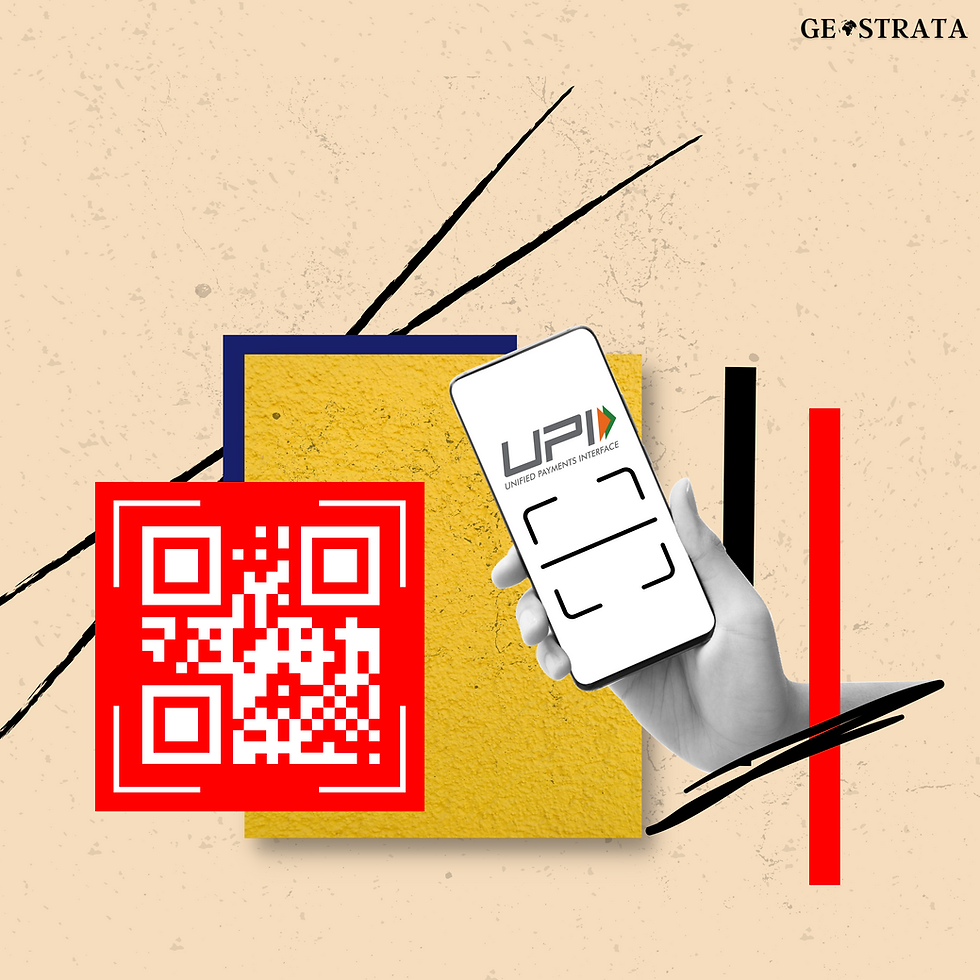Digitization has been one of the priority agendas of the G20 during Indonesian Presidency, which is expected to be further sustained by the upcoming Indian leadership in 2023. A collaborative and inclusive effort is needed to ameliorate the post-pandemic world economy and solve sundry problems by forming a nexus of technology and physical monies.

Image Graphics by Team Geostrata
One of the many vital elements of digitization is the inception of the Central Bank Digital Currency (CBDC) system. It is a new concept which serves as an alternative to the chaotic crypto market. Unlike Bitcoin or Ethereum, the digital currency in this structure will be regulated by the respective central banks of the countries.
CBDC- ITS DESIGN AND EXCLUSIVENESS
CBDC is legal tender money in digital form, which can be used for retail and wholesale transactions by masses in their daily life. Contrary to private crypto-currencies, it holds an intrinsic value and serves as an alternative payment option for customers all over the globe. India has launched its e-₹ (Digital Rupee), which will be regulated and circulated by the Reserve Bank of India. This digital currency will coexist with existing monetary systems and aid in augmenting the efficiency of the payment systems.
CBDC’s design is strictly based on a ‘do no harm’ policy meaning that it should not impede the central bank in formulating and applying its monetary policy. Furthermore, CBDC has sub-categories. It can be segregated into two types- CBDC-R (retail) and CBDC-W (wholesale). The terminologies may vary in different countries, but their core function is the same. Whereas the latter will be exclusively available for financial institutions, the former will accommodate the needs of the private sector and non-financial entities.
The CBDC ecosystem can operate on various models, such as the Direct CBDC model and the Hybrid model. Another model called ‘two-tier indirect’ has been suggested by the Reserve Bank of India, which requires a steadfast and streamlined functioning from central banks and the intermediaries (Private Banks).
Furthermore, Digital currency such as e-Rupee (e₹) will act differently from normal UPI (Indian Scenario) payments in the sense that it will be transacted directly through the Reserve Bank of India, whereas for managing UPI transfers, each bank (intermediaries) has its own UPI handler and they settle their accounts with RBI. Moreover, unlike UPI payments, CBDC will not necessarily be backed by underlying physical currency.
IMPORTANCE OF CBDCs IN CROSS-BORDER PAYMENTS
The value of the cross-border payments market in 2020 was more than $140 trillion, wherein the B2B (Business to Business) segment dominated the majority of the value. This data is a testimony to the fact that with increased inter-country trade, which persisted even during the Covid-19 crisis, refining and reorganising the payment transfer structure is the need of the hour. This can be achieved through innovation in technology and its flawless implementation.
As a result, The G20 has taken cognizance of impediments in cross-border payments and constituted a programme for the same, which outlined the global response to the formulation of CBDCs in the form of 19 building blocks (BB 19). This programme endeavours to address the obstacles such as high cost and low speed in the functioning of over-the-border payments comprising wholesale and retail payments in the form of remittances sent by the immigrants to their families.
However, the cross-border payments chain is very complex and time-consuming, which can be detrimental to the overall growth of international trade. CBDCs can help mitigate these problems if designed and formulated adequately. Firstly, these currencies can play an essential role in improving the security and transparency of such payments as they are the direct liability of central banks and would be transacted through the same. This would cut down the rail of cross-border payment structure, thus increasing the transfer speed and efficiency as a whole.
Secondly, CBDCs also serve as an alternative in the gamut of current payment options, which would trigger competition and eventually streamline the whole process.
THE COMPLEXITY OF INTEROPERABILITY IN THE CBDC SYSTEM
The paramount concern of CBDC architecture is its interoperability. To define in simple terms, interoperability is the exchange of information among a group of systems designed dissimilarly in different countries. A common bridge needs to be constructed to make the whole system interoperable. For instance, BIS’ innovation hub project, which includes the central banks of China, Hong Kong, Thailand and UAE, has emerged as one such bridging project.
It is imperative to maintain the interoperability of CBDCs in cross-border payments as these involve debit and credit transactions in different accounts through PSPs (Payment Service Providers) operating in totally different systems. This may also emerge as a challenge for the countries mulling over the digital payments architecture as they may face a conflict and contrast between domestic and international interoperability where a trade-off would be the only option left.
Apart from the aforementioned challenges, there is also the issue of currency conversion for which the exchange rate needs to be determined, and forex trading platforms are required to be set up for the settlement of the same.
INTERNATIONAL COLLABORATION
Throughout the globe, central banks are exploring and experimenting with CBDC systems, where countries like India and China have taken a giant leap forward by digitising their payment systems in addition to already operating online transaction options. Stressing cross-border payments, G20 nations must contemplate and design a framework that would lead to mutual benefits.
A single clearing window for these payments or conceiving systems which can adopt or work with other systems is the key topic that needs to be given the utmost priority while forming the roadmap for the same. Through the G20 platform, central banks need to work in liaison with each other to ensure the interoperability of CBDCs. India can lead the way in this domain by giving it greater importance during its chair at G20 next year as a part of accomplishing the broader goal of digitization.
BY STRATA
TEAM GEOSTRATA
.png)
Comments